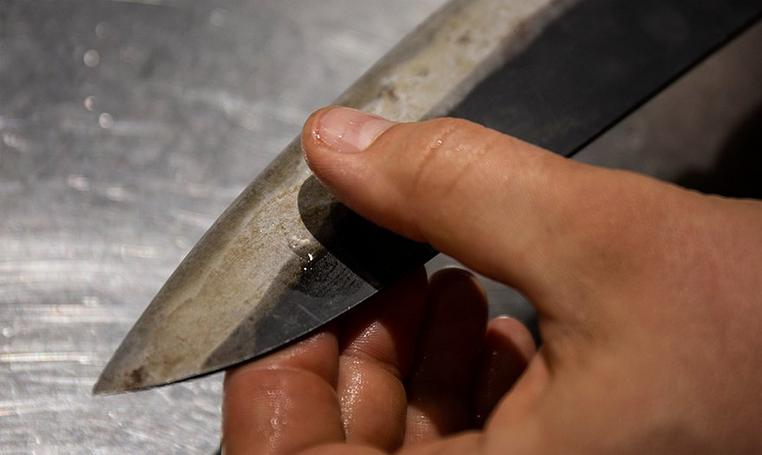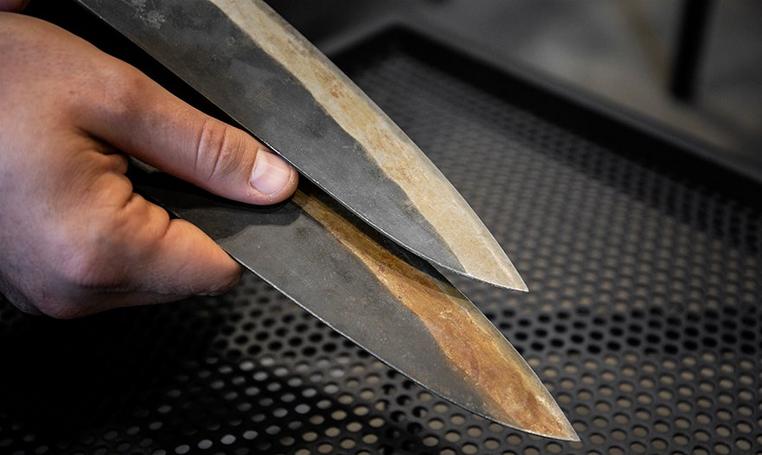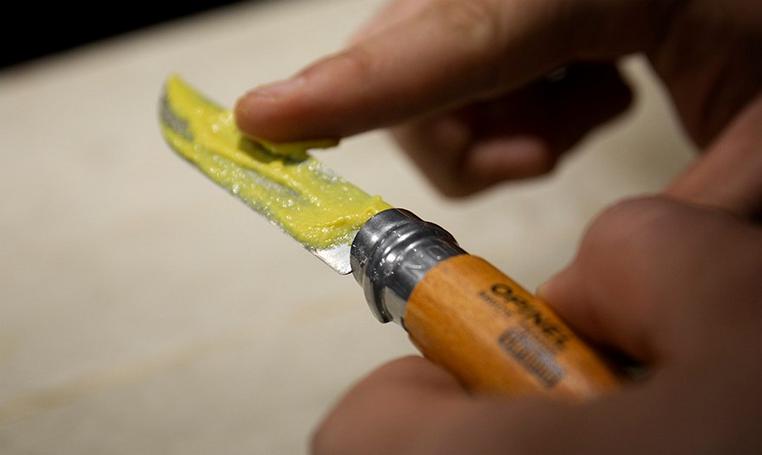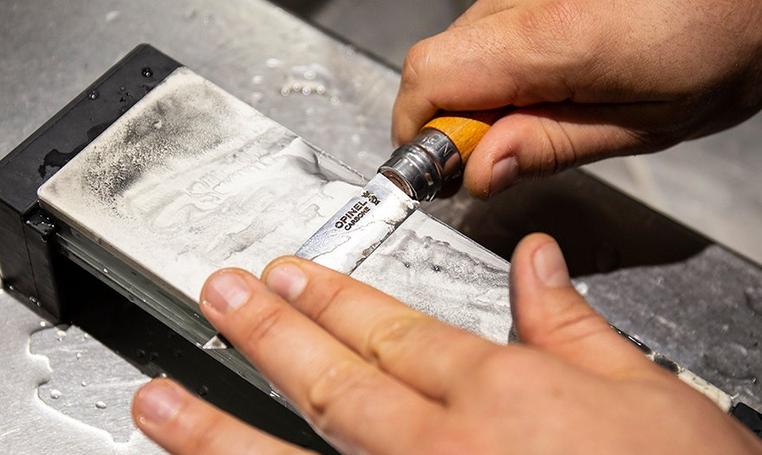What is patina on a knife?
Patina on steel or other metals is something we get a lot of questions about. There are, for instance, people who wonder that those strange stains are doing on the blade of their expensive chef’s knife. Or a grey hint on a carbon steel outdoor knife. Often they immediately think of rust. Not always justified. For that reason we would love to explain what patina is, but also what the advantages and focus areas are.
What is patina?
Patina is a broad concept that, we believe, can best be described as a product that has ‘aged’. Traces of use as it were. A natural, superficial discolouration of a metal that lies on the surface as a type of layer.
In general patina forms on carbon steel knives. Think of survival knives made from, for instance, 1095 carbon steel. But also on kitchen knives. Our Eden Kanso Aogami-knives are known for the stunning patina they form.
Sometimes there are major differences between the types of carbon steel or tool steel that are used. That is due to the different degrees of corrosion resistance. Some steels cannot withstand corrosion at all and start to form a patina the moment you hold your finger against it, other types require long-term explosion to the elements to start showing discolouration after a couple of weeks or months.
However, patina can also manifest itself on other materials. Think of brass, copper and bronze. Those metals can turn black or even green. For instance, a [Buck 110](kato://product/Buck 110) can have a flawless blade while the brass bolsters show the actual age and character of the knife.
How does patina emerge?
Because of external influences patina can emerge in different ways. You could, for instance, expose two exactly similar knives to different circumstances and you will notice different discolourations on both. Well-known catalysts of patina are: salt, acids and moisture.
The influences of salt and moisture are almost unavoidable. As soon as you touch a carbon steel blade with your finger the sweat on your fingers can already start to affect the blade. There are, for instance, a couple of Spyderco Sprint Run pocket knives enhanced with exotic types of tool steel that start to show a dark grey colour around the thumb hole after only a couple of weeks. Nothing to worry about: it is simply patina.
What is the function of patina?
In the long run you will notice that with a normally formed patina layer the blade will become rustproof. Have you learned in the beginning that your carbon steel kitchen knives stain and discolour when you wash them directly after use? You will notice that after some time the blade will start to hold on to its present discolouration. As such the patina will work as a type of ‘seal’ on the steel.
In the meantime the blade will have been adorned with discolourations and stains that make the knife unique.
What is the difference between patina and rust?
When you learn that patina forms on knives that are not very corrosion resistant you might start to think that it is simply rust. It is, however, not that simple. After all, patina is a thin layer that forms on the blade and is ‘finished’ after some time. Rust, however, continues to spread and will affect the knife in the end. The line between both might be thin, but patina is more controlled than rust.
How can you form a patina on your knife in a controlled manner?
The fact that you would love to enhance your carbon steel knife with a patina doesn’t mean it is okay to neglect it. You still have to use and clean it as you are used to. The patina will appear on its own. It is for that reason also very important to properly dry the knife after cleaning it.
Especially with kitchen knives it occurs often that a Japanese carbon steel knife is dried off with a cloth that is already moist to begin with. The knife won’t be dry afterwards. You will notice that in many cases the surface of the knife remains slightly moist. Putting your knife aside in this condition is simply asking for rust to appear.
For that reason Japanese chefs use two cloths: one that is allowed to get wet to remove most of the water and clean the steel. The second is used to actually dry off the blade.
How do you force a patina to emerge on a blade?
Not in the mood to take extra good care of your knife in the first weeks to prevent rust? You could, of course, always help out a bit. Some people choose to rub some mustard over the blade. This is so acidic the patina will form in no time. Within fifteen minutes you will start seeing results. As such you can form different patterns on the blade.
An important disclaimer is that you are playing with fire when you try this. Do you leave it on too long? Of are the results a little too extreme? This could still cause rust.
How do you remove a patina?
Does the knife no longer look the way you want it to? Went a little overboard in trying to form a patina or ready for a new look? You can easily remove the patina. Some knives can be sharpened clean on a fine Japanese water stone. You do, however, need to know what you are doing when you do this. We are fan of a piece of cloth with a little bit of Flitz. With it you can easily polish off the layer. However, it is good to know that you are not guaranteed to once again end up with a knife that will look the same as it did when it was still new.












